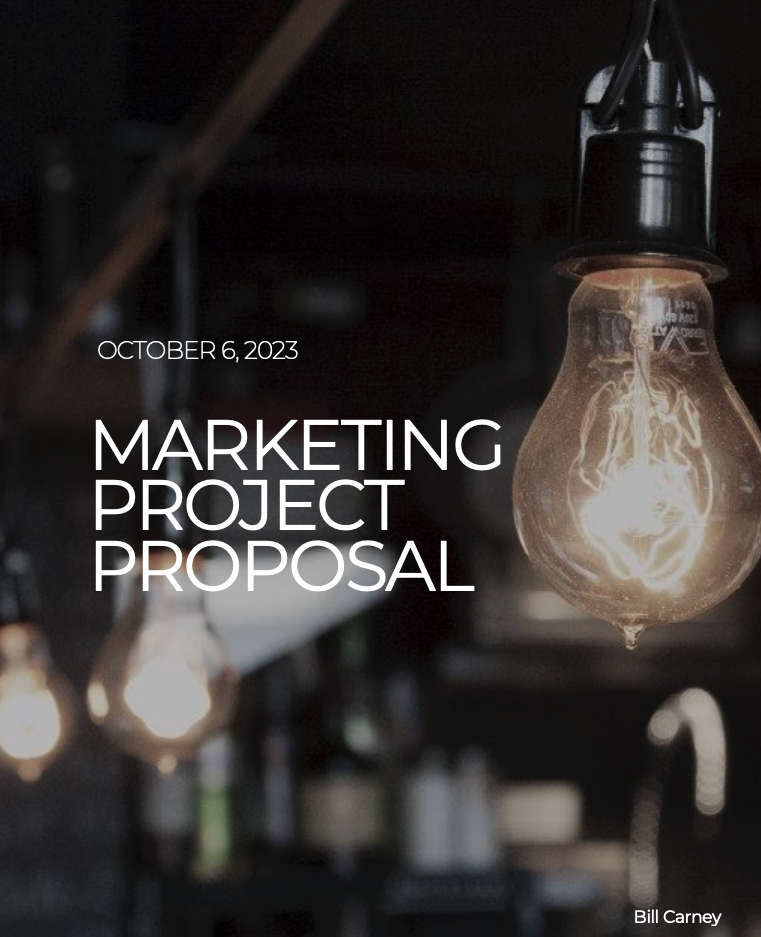Using a proposal template
Key sections of a consulting contract
January 3, 2024

Crafting a Winning Marketing Consulting Proposal: Templates Are Fine, but Context Is Everything
When it comes to securing a marketing consulting contract, the proposal you submit can make or break the deal. It’s not just a formality; it’s a comprehensive document that needs to clearly convey essential components like scope, objectives, approach, deliverables, timeline, and terms of engagement. While templates can be helpful, it’s crucial to remember that context is everything in crafting a successful proposal.
The Role of Templates
Templates can be a valuable starting point when creating a proposal. They provide a structured outline that ensures you don’t miss crucial elements. In fact, some templates, like the one I used recently, have even helped win contracts. However, it’s essential to recognize that templates are not a one-size-fits-all solution. They are like the skeleton of your proposal; you need to add the flesh and blood to make it come alive.
The Structure of a Winning Proposal
To create a meticulous consulting contract project proposal that resonates with your potential client, it’s important to consider the following structure:
1. Title Page
The first impression matters. Your title page should include the client’s name, logo, and the date of proposal initiation. This formal introduction sets the tone for the entire document.
2. Introduction & Problem Statement
Start your proposal with an introduction that expresses gratitude for the opportunity and acknowledges the client’s business background. Here, you also need to articulate the challenges or issues the proposed marketing consulting project aims to address. This sets the context for your solutions.
3. The Approach
In this section, outline the methodology and strategies you intend to use to address the client’s needs. Emphasize the tools that will be employed in the consulting process. It’s also a great place to provide a brief overview of the client’s business, industry, and relevant background information to demonstrate your understanding of their unique challenges.
4. The Thinking
Your proposal should subtly introduce your skills and expertise, especially as they align with the project’s critical facets. Focus on the main objectives, benefits, and proposed solutions to build confidence in your capabilities.
5. The Program & Objectives
Clearly outline the project’s objectives in this section, creating a vision of success for both parties involved. Define the scope of the consulting services meticulously, breaking down tasks, responsibilities, and deliverables. Present a comprehensive project timeline and tentative schedule, including key milestones and deadlines.
6. Requirements
Recognize the collaborative nature of the project by outlining any specific requirements expected from the client’s end. This ensures a seamless execution and optimal results.
7. The Outcome
This section enumerates the tangible outputs and deliverables anticipated by the client. Specify the nature of reports, analyses, or recommendations that will be presented. Conclude this part with an open invitation for the client to engage in discussions regarding any queries or concerns.
The Personal Touch
In summary, while templates can be helpful, it’s paramount to customize the proposal to align precisely with the client’s unique needs and preferences. Throughout the document, maintain clear, concise, and consistently professional language to reflect your commitment to delivering excellence in the proposed consulting services.
Remember, context is everything. Your proposal should not be a cookie-cutter document but a tailored solution that addresses your client’s specific challenges and requirements. Templates provide structure, but it’s your creativity, expertise, and understanding of your client’s needs that will ultimately win you the contract.